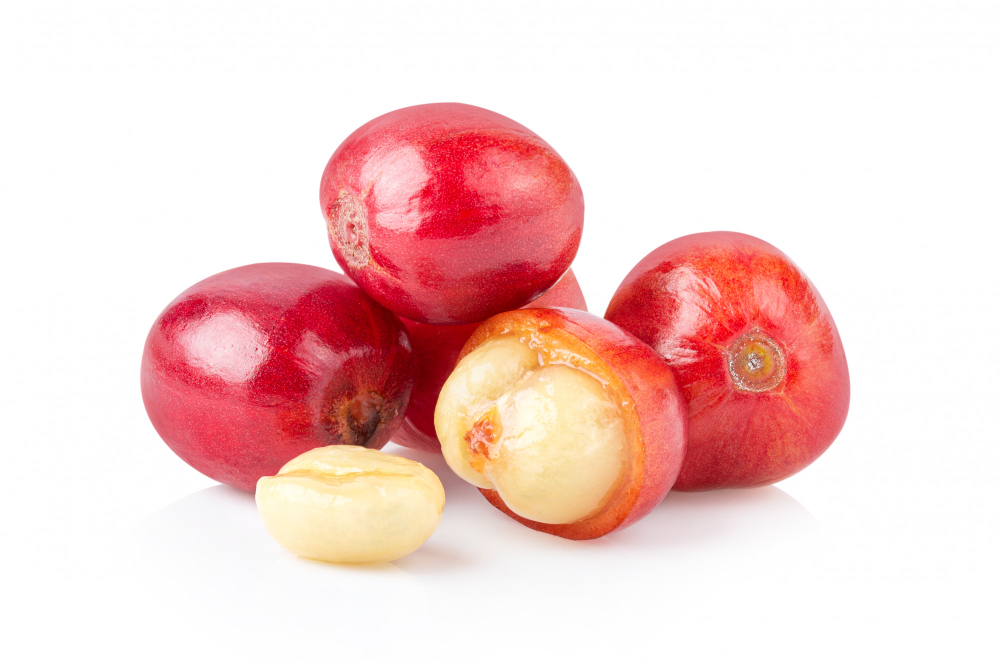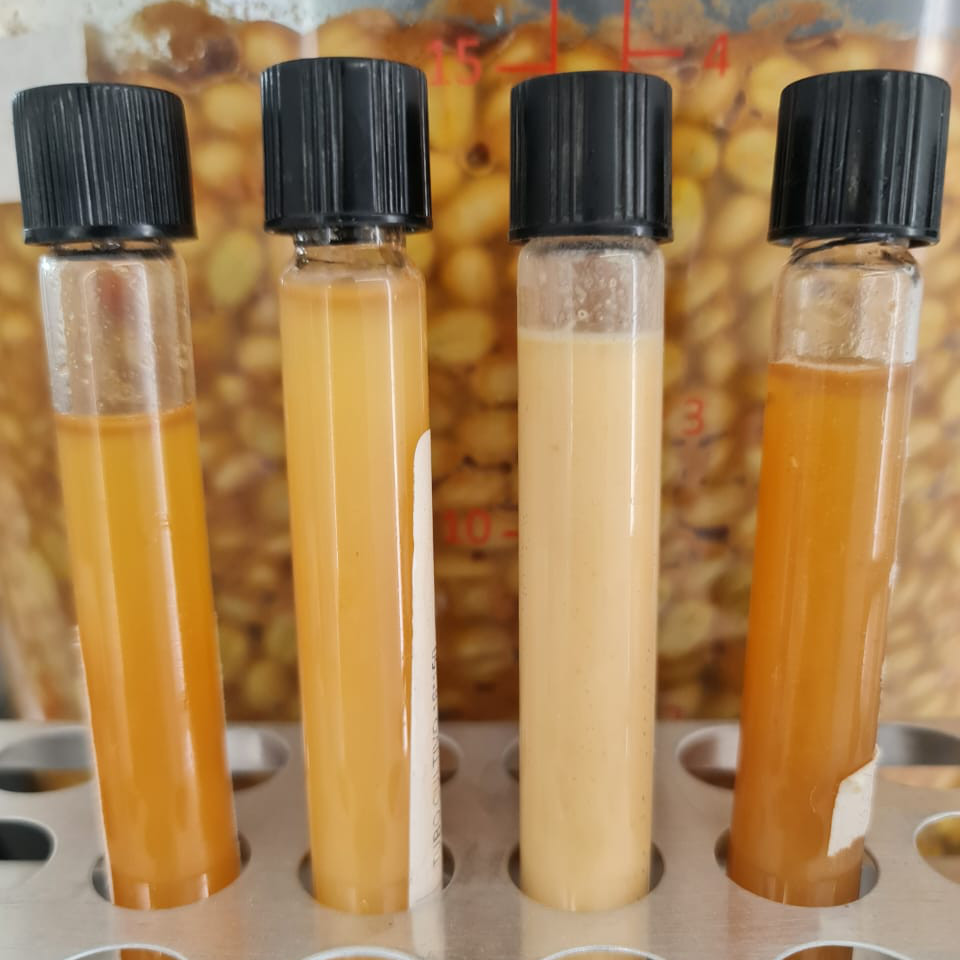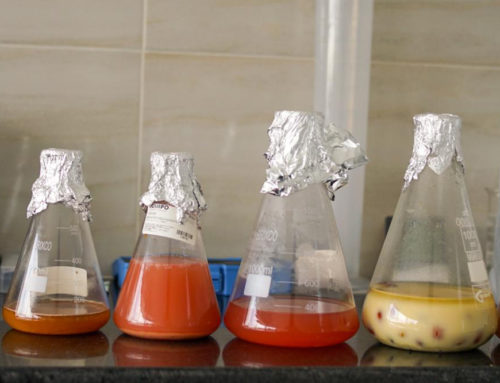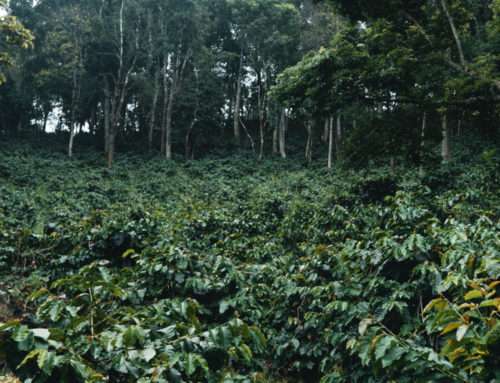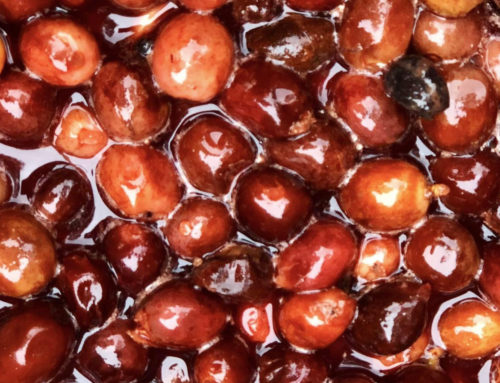How Microorganisms contribute Body, Acidity and Fruity Flavors to your Coffee
Microorganisms oversee the fermentation process and are the key to obtaining differentiated and replicable coffees.
There are certain groups of microbes that directly influence the development of flavors, sweetness, acidity, and body that characterize a cup of coffee.
Below we dive deeper into microorganisms involved in the coffee fermentation process and how they contribute to create exceptional cup profiles.

1. Coffee Fermentation Microorganisms
As we discussed in our post COFFEE FERMENTATION: 8 THINGS YOU PROBABLY DIDN’T KNOW, fermentation is a biochemical process.
It involves different kinds of microbes and metabolisms that result in different byproducts. Those byproducts are the ones that ultimately help to define and accentuate the unique flavors and aromas of a cup of coffee. We also find some types of filamentous fungi in the process.
Let’s take a look at the main characteristics of each group.
1.1. Fungi
The fungi family is very extensive and includes many different varieties from the microscopic fungi to the mushrooms that we consume such as orellanas. Fungi are classified as eukaryotic organisms because their cells have a well-defined nucleus surrounded by a nuclear membrane.
They are also heterotrophic, meaning that they are not capable of producing their own food and require an external substrate to feed themselves. Fungi may consist of a single cell, such as yeasts or they can be multicellular, in which case we refer to them as filamentous fungi. They reproduce from spores (sexual reproduction) or from mycelium (asexual reproduction).
1.2. Yeasts
Yeasts are fungi consisting of a single cell. They are spherical or elliptical in shape and reproduce mainly asexually by budding. In this process, a mother cell divides into two giving rise to a daughter cell. Thus, each cell divides many times until it forms a colony.
In the fermentation process of coffee mucilage, two groups of yeasts are present.
1.2.1 Fermentative yeasts.
In this group we find Saccharomyces cerevisiae, the same species that works in the fermentation of bread, beer and wine ad include several species of Candida, such as C. albicans, C. tropicalis, C. krusei, C.lipolytica, C. parasilopsis and C. pintolopesii.
Yeasts excrete enzymes to break down the pectin in coffee mucilage into simple sugars that serve as food. As a by-product of this metabolism, they produce ethanol and CO2. Fermentative yeasts are facultative so they can live both in the presence and absence of oxygen.
1.2.2 Oxidative yeasts
Oxidative yeasts are obligate aerobes and can only live in the presence of oxygen. In this group we find Cryptococcus terreus, Rhodotorula rubra and R. glutinis. In addition to oxygen and food, all yeasts require a suitable temperature and pH of the medium to be able to do their work well.

1.3. Bacteria
Bacteria are unicellular Prokaryotic organisms, meaning they lack a defined nuclear membrane. They play a large role in the coffee fermentation process as well. Some particularly important bacteria in coffee fermentation are: Lactobacillus acidophilus, L. fermentum and L. plantarum.
Lactobacillus are responsible for breaking down the ethanol produced by the yeasts during fermentation and converting it into lactic acid. This lactic acid then helps to lower the pH of the coffee mass and thus controls the growth of undesirable fungi and bacteria.
To learn more about the lactic acid fermentation of coffee we invite you to read our post LACTIC ACID FERMENTATION IN COFFEE 101: What is its importance?
Other common genera of bacteria found in coffee mucilage are Enterobacter, Flavobacterium and Klebsiella.

1.4. Filamentous fungi
Filamentous fungi do not play any role during the fermentation process of coffee mucilage. On the contrary, they are considered harmful and their populations should be controlled during the process of fermentation and drying of the beans. Their development on coffee beans causes defects such as unpleasant, moldy odors and flavors.
They usually appear when the bean drying process is deficient, but can also appear during the drying of Honey coffee in which the bean is covered with mucilage resulting in a more prolonged and difficult drying process. If you’d like to learn more about the different types of coffee processes such as honey and natural, we invite you to read our post Coffee: Natural, Washed and Honey. What is the difference?
The main genera of fungi that can be found in the coffee fermentation process are Aspergillus, Penicillium, Fusarium and Trichoderma. All of these are natural inhabitants of the soil and are also found in plant tissues. Because of this, they typically arrive attached to the coffee cherries that are harvested during cultivation. Additionally, they can develop in greater or lesser proportion during the fermentation and drying of coffee cherries depending on how the process is carried out.

2. Control of undesirable microorganisms in the coffee process
Bacteria of the Bacillus genus, especially B. megateriu, produce propionic acid as a byproduct of their metabolism.
This acid is the precursor of the unpleasant onion flavor that can be found in coffees that originate mainly from natural processes and in coffees that have been fermented for longer than the permissible time.
There is a great amount of undesirable microbes present during the entire coffee process, and in order to inhibit their development, it is necessary to control certain aspects of the coffee production process such as the following ones.
2.1. Quality of the cherries
Ripe and fresh coffee cherries contain a greater amount of mucilage with a higher concentration of sugars.
Because of this, it is recommended to harvest cherries at optimum maturity so that the yeasts and lactic acid bacteria have sufficient food and are able to develop.
On the other hand, dry or overly green cherries do not contain mucilage, so yeasts will not be able to thrive. Instead, fungi will take their place. The proceeding fermentation process then results in unpleasant flavors and aromas such as musty, earthy and sour.
2.2. Cleaning of facilities and machinery
Fermentation tanks and equipment should be cleaned daily. Otherwise, mucilage residues and dirt adhering to it become an ideal substrate for mold and bacterial growth.
2.3. Water quality
If the water used in the submerged fermentation process and/or coffee washing is contaminated, it can be assumed that bacteria such as E. coli and other enterobacteria will appear. Fecal bacteria and enterobacteria are undesirable, because they produce formic acid and acetic acid as residue during the fermentation process. In high concentrations these two acids have a negative influence on the profile of the coffee.
On the other hand, when fresh and clean rainwater is used, the fruity and sweet flavors in the cup of coffee are much more accentuated.
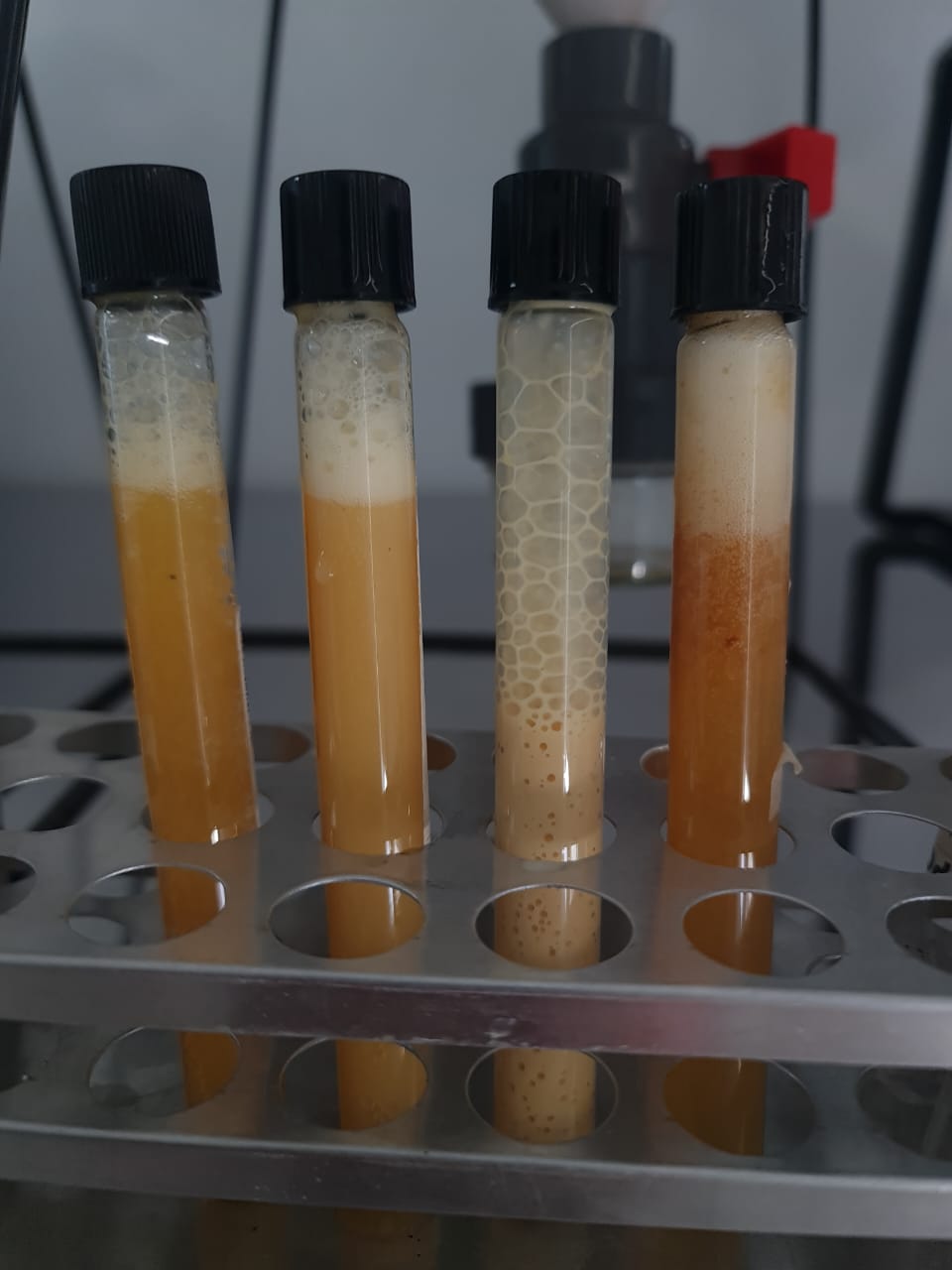

3. Microorganisms: The key to differentiated coffees
During the processing of the coffee the presence of undesired microorganisms must be avoided. At the same time, we must provide the best conditions for yeasts and Lactobacillus to do their job well.
3.1. Factors favoring the activity of yeasts and lactobacilli
3.1.1. Temperature
Each microorganism has an optimal temperature range for its development. Yeasts develop best in ranges between 28 and 35°C and Lactobacillus develop between 25 and 30°C.
Research has shown that when fermentation occurs at a temperature of 15°C, special flavors and differentiated coffees are obtained, in comparison with coffees that have been fermented in ranges between 18 and 30°C.
In anaerobic fermentation, it has been found that a prolonged fermentation at temperatures between 4 and 8°C can obtain a complex acidity, while sweeter cups are obtained at temperatures between 18 and 24°C.
3.1.2. PH
At the beginning of the fermentation process the pH of the coffee mucilage is approximately 5.2. When it reaches values between 3.5 and 4, the growth of E. coli and enterobacteria is inhibited and the growth of Lactobacillus is promoted.
Therefore, it is best to maintain the pH of the coffee mass in these ranges during the fermentation period.
3.1.3. The fermentation time
The fermentation time of coffee varies according to the environmental temperature conditions. The warmer the climate, the faster the fermentation. In uncontrolled fermentation processes, coffee defects such as harsh, woody, and sour flavors increase when the temperature is high and/or when the fermentation time is too long.
But in today’s times, controlled fermentation processes seek to extend the fermentation time of coffee to promote sweetness and acidity in the beverage. This is achieved by maintaining low temperatures and a pH between 3.5 and 4. Thus, yeasts and lactobacillus can continue to work for periods of time beyond 36 hours. At the same time, the growth of filamentous fungi and undesirable bacteria is inhibited.
In general, research has shown that during the first 24 hours of fermentation, yeasts and lactic acid bacteria dominate within the microbial complex. This results in a higher quality of coffee. On the contrary, when the fermentation time is extended in uncontrolled processes, fungi and other bacteria that produce unpleasant flavors and aromas begin to dominate.
3.1.4. The fermentation method
As we already know, Brix degrees allow us to quantify the concentration of total solids in the coffee mucilage. These solids are largely sugars, which are the nutritional substrate for yeasts.
When coffee fermentation is done in solid mass, the Brix degrees of the substrate decrease over time. In the same way, the yeast population decreases to give way to lactic acid bacteria populations.
This results in more complex cups with fruity, citric and chocolate notes. When fermentation is carried out with a 30% water addition in open systems, the Brix increases by up to 7.8% instead of decreasing over time.
Therefore, the yeasts remain in the coffee mass for a longer period of time. This is very desirable if one wants to prolong the fermentation time and obtain more delicate and sweet cups of coffee with notes of chocolate and caramel.
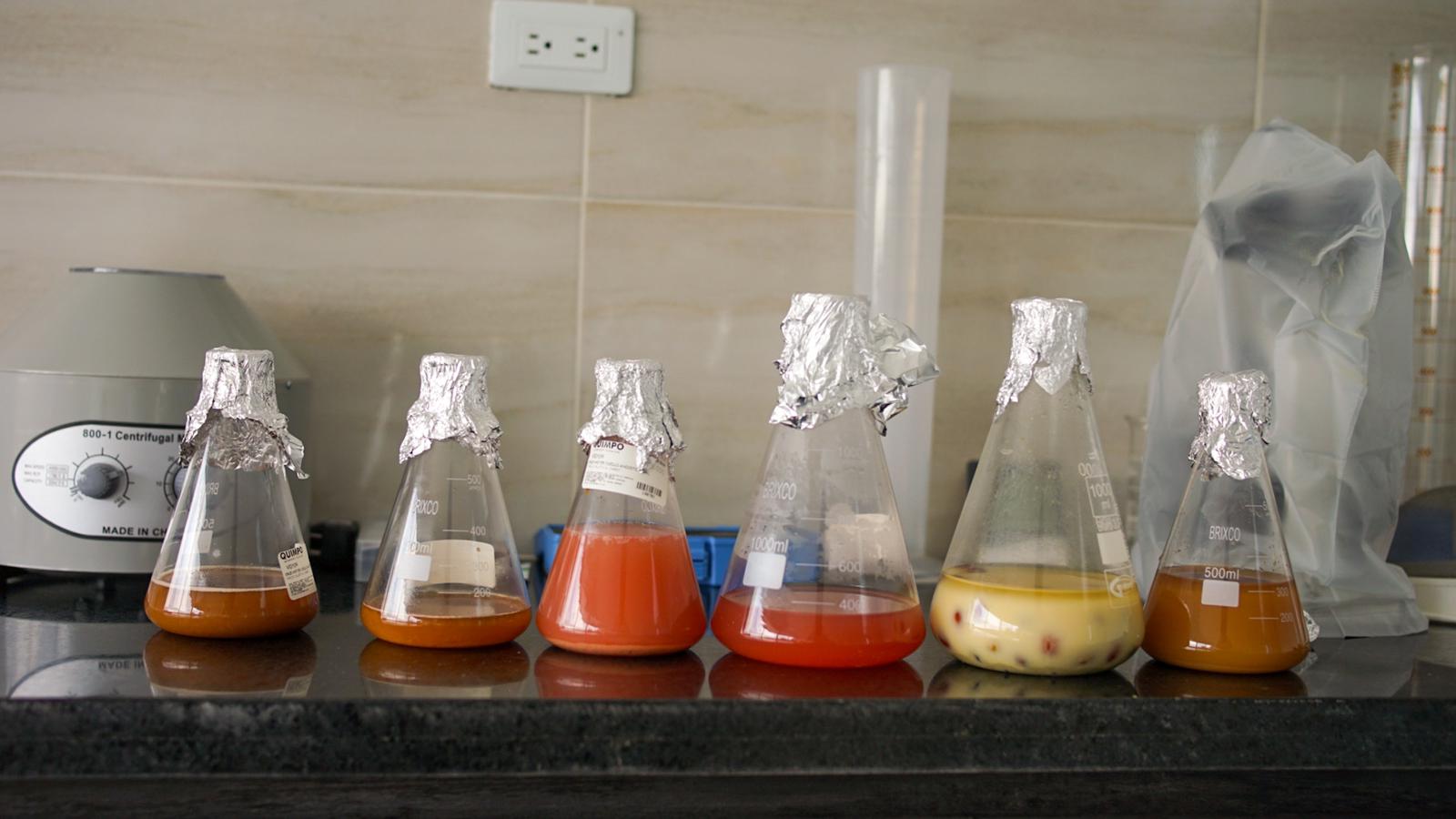
4. Native microorganisms and characteristic cup profiles
Each terroir has a very particular indigenous microbiota that may be the key to achieving intriguing cup profiles. If you are not very familiar with the term “terroir” in coffee, we invite you to read our post Coffee and Wine: What do they have in common?
Although it is difficult to identify, isolate, and reproduce the indigenous microorganisms associated with coffee cherries on each farm, some companies and coffee growers have begun to do so. Being able to use inoculums of native microorganisms in the controlled fermentation of coffee makes it possible to obtain unique, differentiated and replicable cups.
Researchers believe that each fermentation method and protocol creates a particular environment. In that environment, certain microorganisms thrive and produce specific metabolic reactions. The products produced in these metabolic reactions affect the chemical composition of coffee beans and their cup quality.
4.1. Microorganisms produce enzymes that affect the cup profile of coffee
Microorganisms perform an external digestion of the cellulose and pectin present in coffee mucilage for which they excrete enzymes. Coffee researchers work to isolate these enzymes and some are already on the market for use in controlled coffee fermentation processes.
Among them are Benefax, Pectozyme, Cofepec and Ultrazym. The use of these enzymes seems to be promising, but they are not yet within the reach of all coffee growers.
This is likely because not enough information has been disseminated about their benefits and usage in specific controlled fermentation protocols.
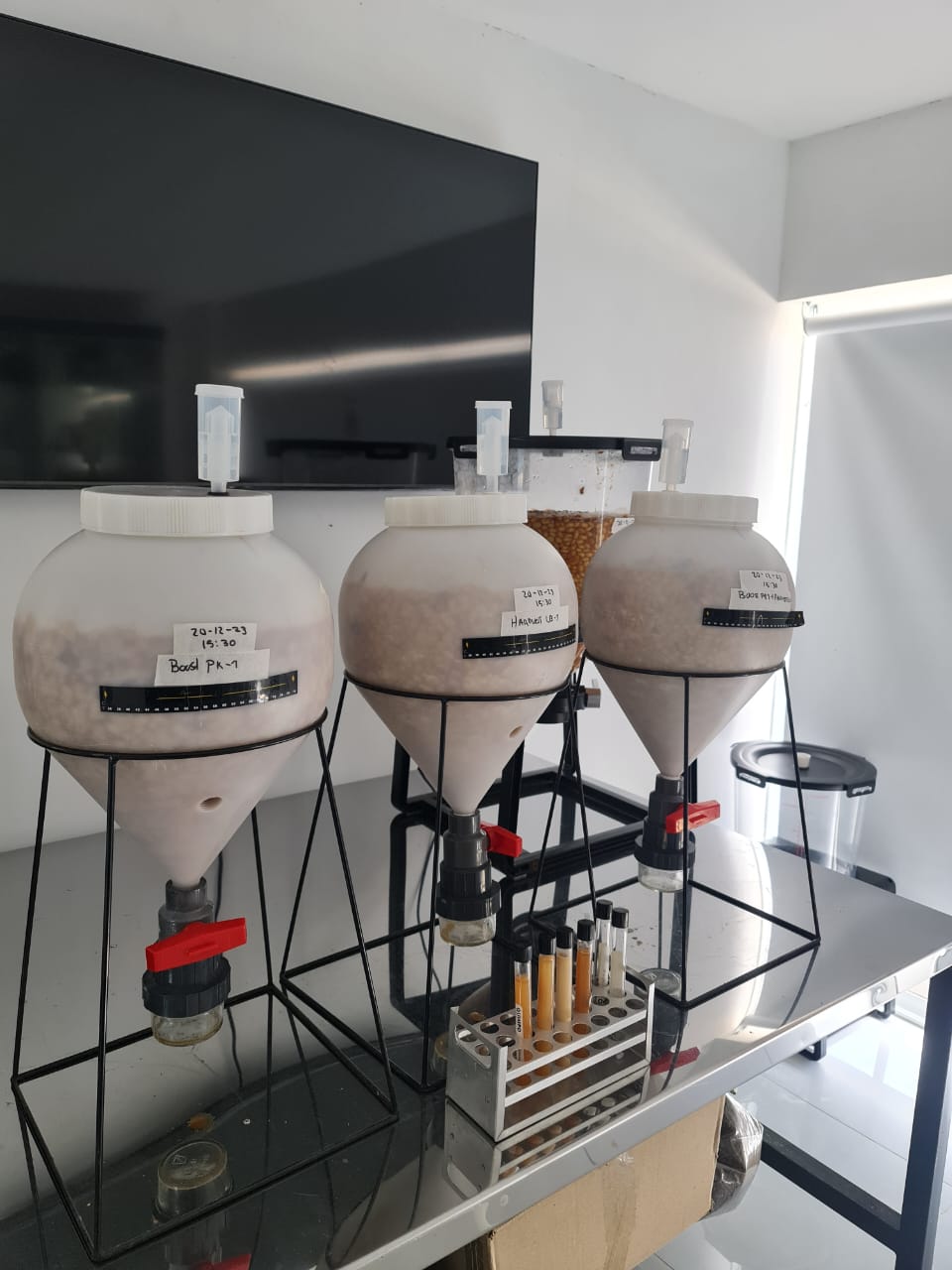
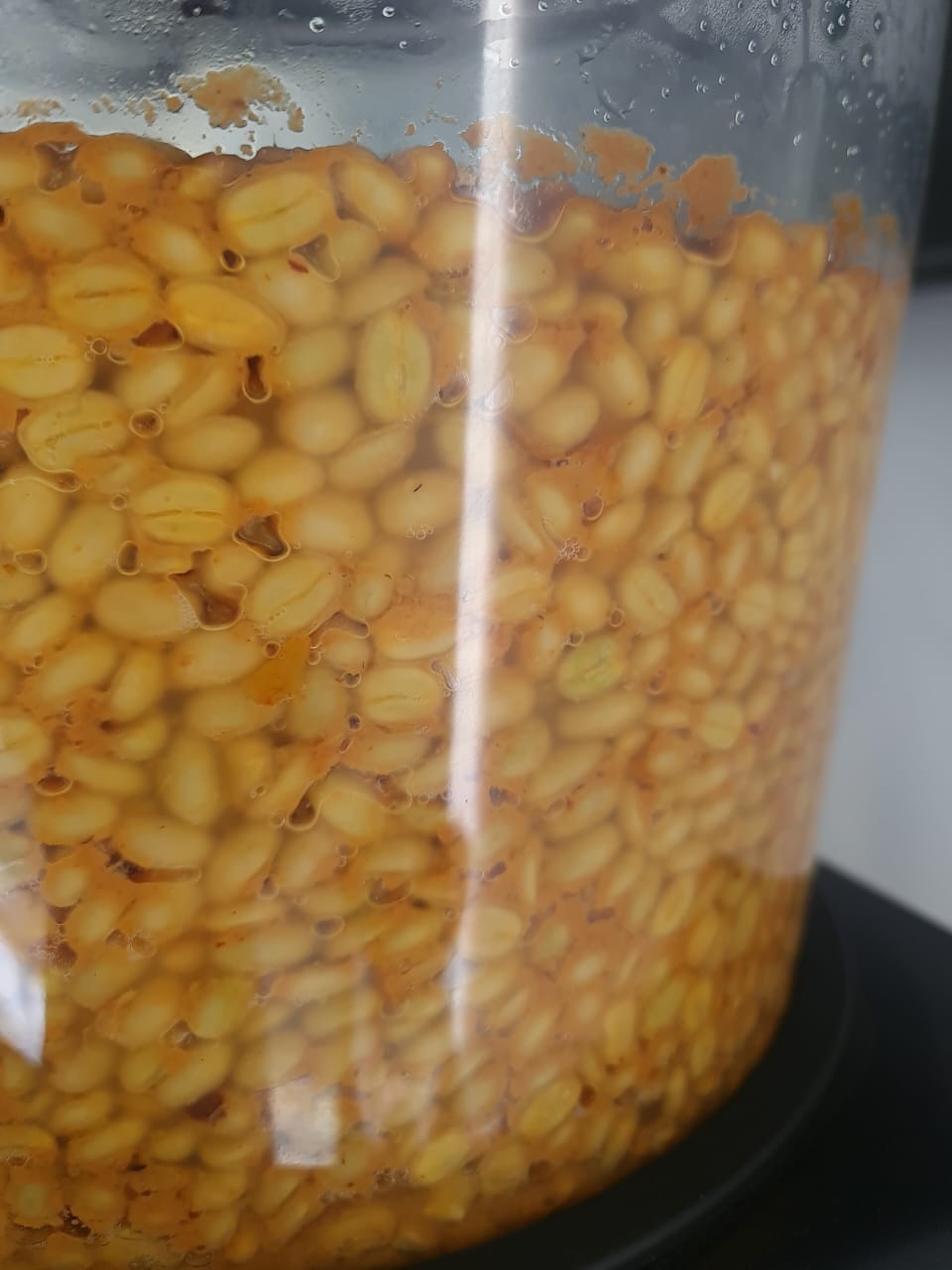
5. Microorganisms and sensory profile of coffee
Regarding the microbial complexes isolated to be used as starter inoculum for coffee fermentation, the isolation of certain aromatic yeasts has special importance, as well as different species of lactic acid bacteria that are associated with each terroir and each variety of coffee. All have a direct influence on the cup profile of coffee.
Some recent results in this field include the following.
Silva et al. (2013) worked with a microbial complex formed by Saccharomyces cerevisiae, Candida parapsilosis and Pichia guilliermondii. They managed to obtain a high quality cup profile with notes of caramel, herbs and fruits.
Pereira et al. (2014) worked with a complex of Pichia fermentans and Saccharomyces sp and obtained high scoring coffees with a fruity, vinous aroma and buttery body. Pereira et al. (2014) in another experiment, worked only with Pichia fermentans and managed to obtain high quality cups with vanilla notes and floral aroma.
In 2020, a study published by UNSW of Sidney investigated the impact of fermentation on flavor volatiles: “The results showed that Fermented roasted beans had higher concentrations of ethanol, isoamyl alcohol, 3-methylbutanal, benzaldehyde, acetaldehyde, and ethyl acetate and demonstrated that wet fermentation of coffee beans can significantly enhance the flavor, aroma and sensory quality of the coffee beverage by directly increasing the levels of key volatiles such as alcohols, organic acids, esters, and aldehydes.
Moreover, Fermentation also modified the pH of green beans, which might affect the formation of important coffee volatiles during the subsequent roasting process. Moreover, wet fermentation reduced the concentration of undesirable volatiles such as butanoic acid, which also contributed to the higher sensory quality of coffee beverage brewed from fermented coffee beans”.
If you want to know more about the results of this research you can click at here: The Role of Microbes in Coffee Fermentation and Their Impact on Coffee Quality.
5.1. Indigenous microbial complexes associated with wet fermentation of coffee
Some research has demonstrated a direct relationship between the activity of Lactobacillus plantarum and fruit aromas. Ribeiro et al. studied the microorganisms present in wet fermentation in three varieties of coffee: Mundo Novo, Oro Amarelo and Catuai Rojo. They found very specific microbial complexes act during wet fermentation of coffee in each variety. As a result, each of the varieties developed a very characteristic cup profile.
In the Oro Amarelo variety, the coffee profile was described as chocolate, vanilla, creamy body, clean and pleasant finish. This variety showed acidity as the predominant attribute. The researchers believe that the acidity in this case can be attributed to the presence of Bacillus licheniformis within the microbial complex. This is because its metabolism is associated with the production of citric acid.
For the Mundo Novo variety, the coffee’s profile was described as milk chocolate, almonds and a pleasant finish. And its most outstanding aspects in the tasting were the bitter sensation at the beginning (5 to 20 s), followed by bitter chocolate (20 to 25 s) and ending with nuts. This variety registered the greatest diversity of lactic acid bacteria (5 species). These were possibly associated with a higher concentration of sugars in the mucilage of the cherries compared to the Catuai and Oro Amarelo varieties.
In the red Catuai variety, the cup profile was described as caramel-like flavor with citric acidity, creamy body and long finish. Acidity was the dominant taste at the beginning of the analysis (between 5 and 10 s) followed by astringency (between 10 and 15 s) and ending with a dominant sweet sensation (15 to 25 s). Rhodococcus, Acetobacter and Microbacterium species that were not present in the fermentation microbial complexes of the other varieties were identified in this variety.
For more information on this research you can click here The Role of Microbes in Coffee Fermentation and Their Impact on Coffee Quality.
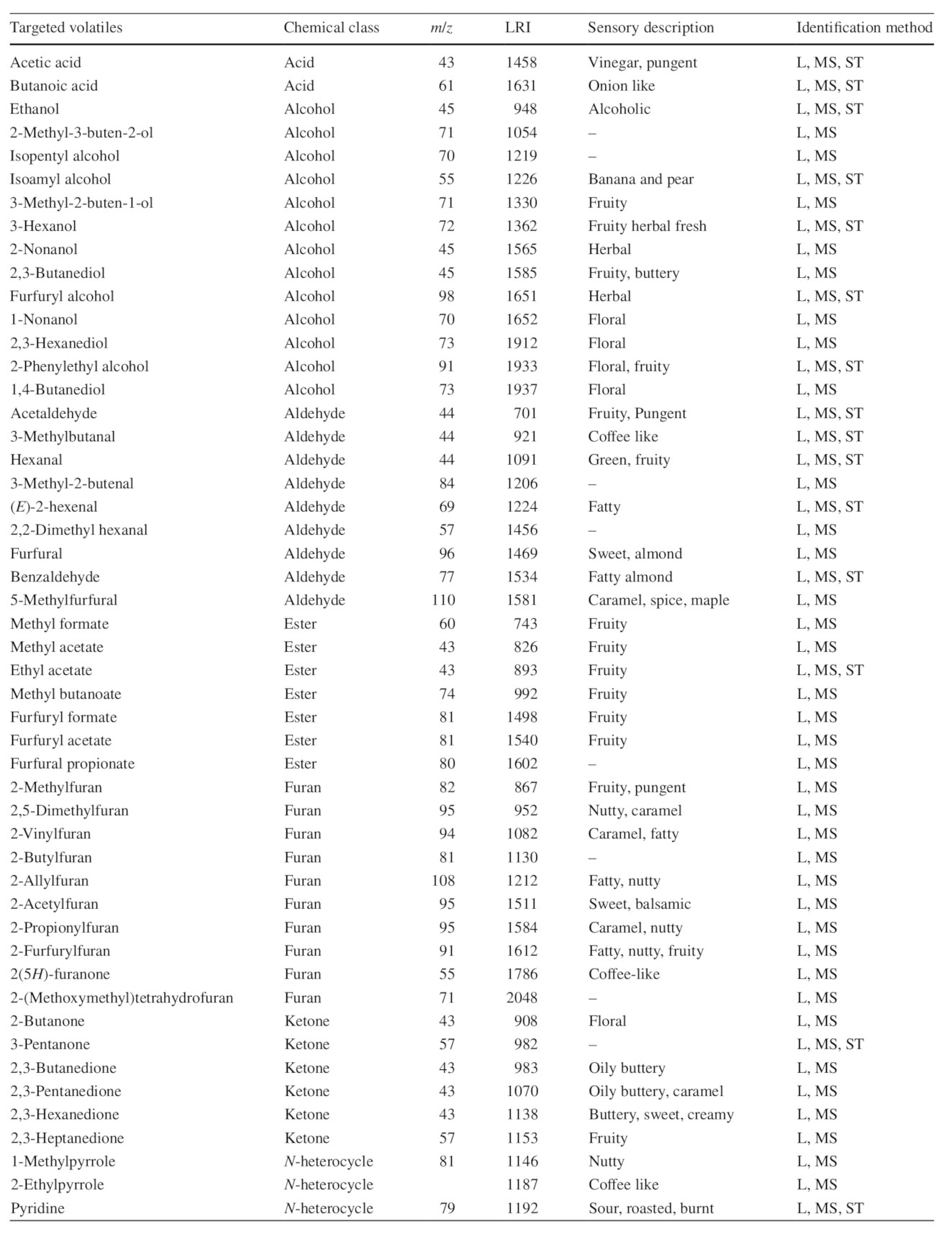
Table 1 from H. Elhalis et al., The role of wet fermentation in enhancing coffee flavor, aroma and sensory quality, European Food Research and Technology, Sep. 2020.
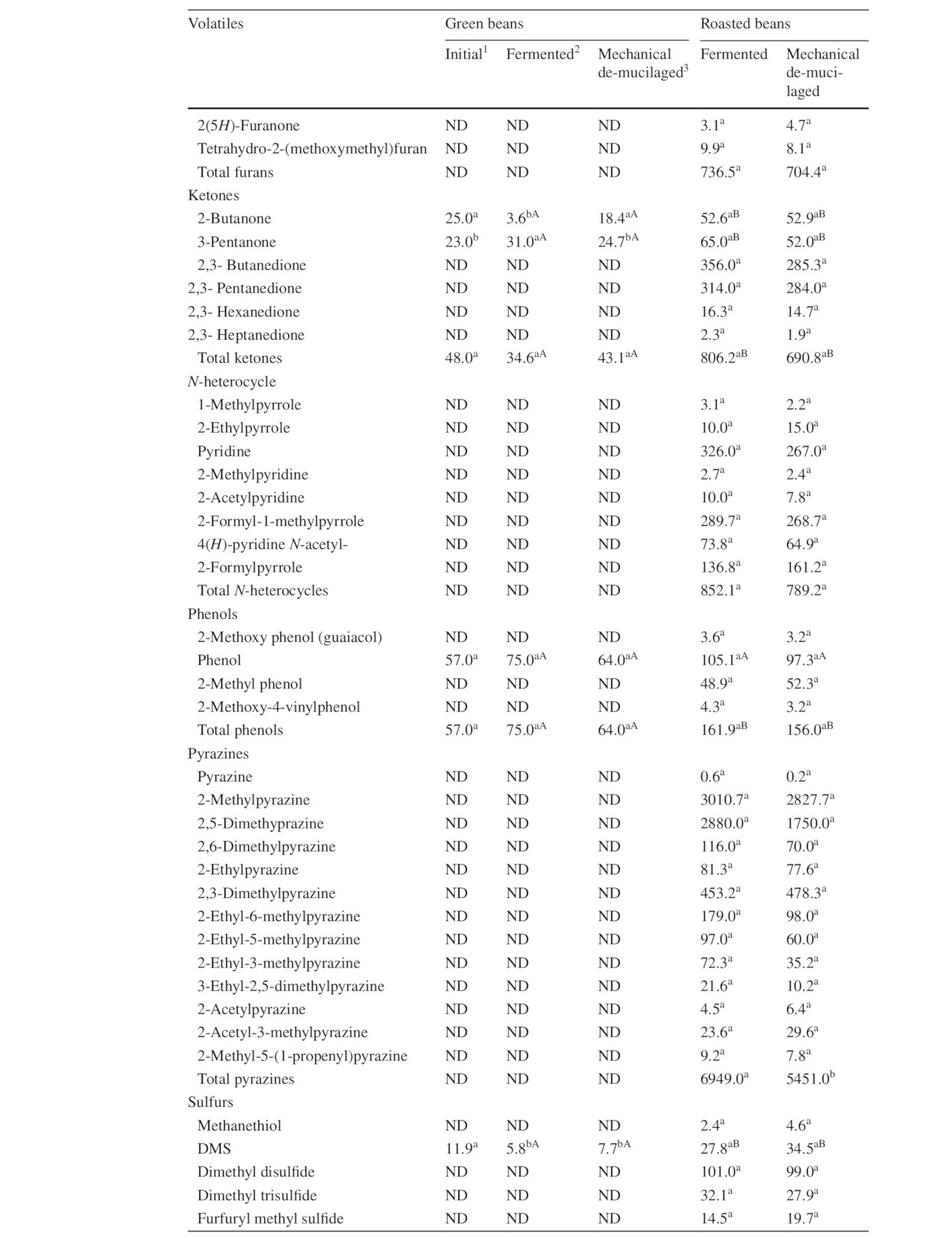
Table 2 from H. Elhalis et al., The role of wet fermentation in enhancing coffee flavor, aroma and sensory quality, European Food Research and Technology, Sep. 2020.
Conclusions
There is a direct relationship between the microorganisms involved in the fermentation process and the flavor profile of the coffee. The higher the proportion of yeasts and lactic acid bacteria within the coffee fermentation microbial complex, the better the flavor profile.
Each coffee variety cultivated in a specific terroir has its own complex of microorganisms that act during fermentation. These are largely responsible for the quality and the cup profile that is finally obtained. Temperature, water quality, fermentation method and fermentation time are determining factors in the formation of the microbial complex that acts during the fermentation process.
Finally, despite all this research there is still a lot of more to be discovered about coffee regarding the identification, characterization and isolation of indigenous microorganisms involved in the coffee fermentation process and their relationship with specific flavor and aroma attributes.
However, every day more and more researchers join this arduous task. And with the passing of time, it is certain that both producers and entrepreneurs of the coffee industry will have the tools to obtain quality coffees with unique, differentiated and replicable profiles.
References
Elhalis, Hosam, The role of wet fermentation in enhancing coffee flavor, aroma and sensory quality. European Food Research and Technology. 2020
Haile, M., & Kang, W. H. (07 de 03 de 2019). The Role of Microbes in Coffee Fermentation and Their Impact on Coffee Quality. (S. Fiszman, Ed.) Journal of Food Quality, 2019, 6.
Puerta Q., G. I. (Diciembre de 2010). Fundamentos del proceso de fermentación en el beneficiodel café. (F. N. Colombia, Ed.) Avances técnicos CENICAFÉ(402), 12.
Puerta Q., G. I. (Agosto de 2012). Factores, Procesos y Controles en la fermentación del café. (F. n. Colombia, Ed.) Avances Técnicos CENICAFÉ(422), 12.
Puerta Q., G., & Echeverry M., J. G. (Abril de 2015). Fermentación controlada del café: Tecnología para agregar valor a la calidad. (F. N. Colombia, Ed.) Avances Técnicos CENICAFÉ(454), 12.
Ribeiro, L.S., Evangelista, S.R., da Cruz Pedrozo Miguel, M.G. et al. Microbiological and chemical- sensory characteristics of three coffee varieties processed by wet fermentation. Ann Microbiol 68, 705–716 (2018).
Tell us if you already knew all these details on the application of microorganisms in coffee, or if you have any particular experience you want to share. We invite you to subscribe to our blog so that you can be informed about new articles and updates on the exciting world of coffee.
Sign up to our newsletter receive monthly articles and updates on the exciting world of coffee, as well as offers from producers.
